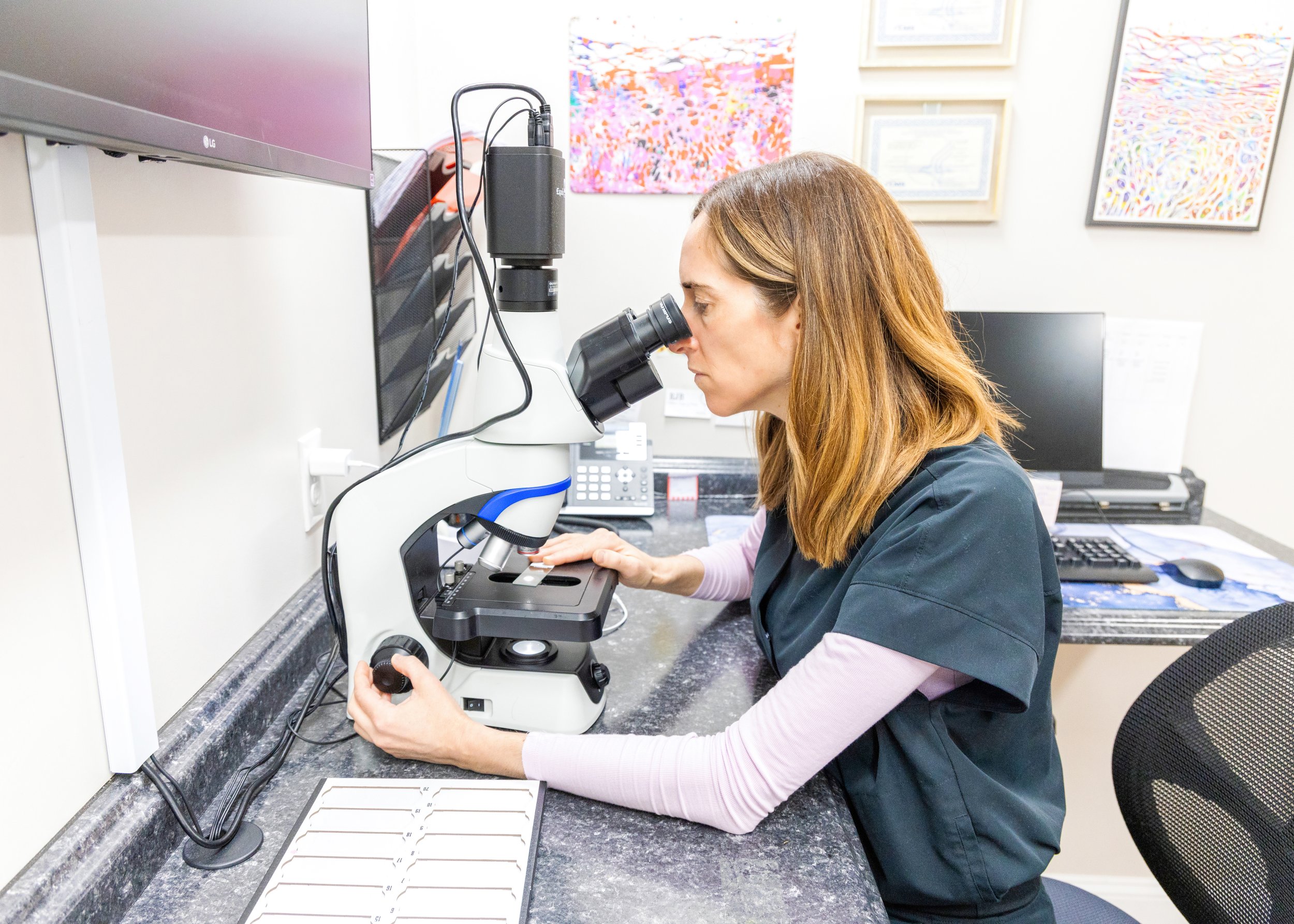Behind-the-Scenes of Mohs Surgery
In the realm of skin cancer treatment, Mohs surgery serves as the gold standard. This procedure, named after its inventor Dr. Frederic Mohs in the 1930s, revolutionized the approach to skin cancer removal, offering patients a superior treatment option. As a Mohs surgeon, I’ll use this blog to take you behind the scenes to explore the benefits of Mohs surgery, and why it is the preferred choice for many types of skin cancer.
As a fellowship-trained Mohs surgeon, I am dedicated to educating my patients and the population about the importance of selecting a surgeon with the proper training to perform this procedure. By completing a rigorous surgical fellowship in Mohs surgery, cutaneous oncology, and complex reconstruction, a surgeon is eligible to become a member of the American College of Mohs Surgery, and the surgeon can develop both the surgical and pathologic skills to serve patients in the most optimal way possible.
The Procedure:
A Mohs surgeon performs the surgery, histologic evaluation, and reconstruction in one visit in most cases. At its core, Mohs is a specialized technique designed to remove skin cancer layer-by-layer with real-time microscopic analysis, which means that we are able to remove as small a margin as possible and check pathology immediately following this removal. We can therefore preserve the surrounding healthy tissue, and target cancerous cells with pinpoint accuracy. What sets Mohs surgery apart is the analysis of the entire tissue margin under the microscope, ensuring the lowest likelihood of recurrence of the cancer. Mohs surgery is performed under local anesthesia, which is extremely safe and effective in the vast majority of situations. The steps of the surgery include:
Tissue Excision: The process begins with the removal of a small margin around the visible tumor.
Mapping and Microscopic Examination: Each excised layer is carefully mapped and prepared in the lab for examination under the microscope, allowing for the Mohs surgeon to then read the slides and determine if there are positive margins.
Layer-by-Layer Analysis: If cancer cells remain in any section of tissue, subsequent layers are selectively removed until the surgeon obtains a cancer-free specimen.
Reconstruction: The preservation of as much normal surrounding skin as possible has implications for what type of reconstruction are most appropriate and the expected healing course.
Benefits of Mohs Surgery:
Mohs surgery stands at the pinnacle of precision in dermatology, offering patients a journey that combines innovation, accuracy, and optimal outcomes. As a Mohs surgeon, I am committed to guiding my patients through this transformative process. Together, we navigate the intricacies of Mohs surgery and the healing afterwards, ensuring a path to health that is marked by precision, confidence, and a brighter future.
Highest Cure Rates: Mohs surgery boasts cure rates exceeding 99% for certain skin cancers, providing patients with the assurance that they depart the office cancer-free and with the lowest risk of recurrence.
Preservation of Healthy Tissue: By selectively targeting cancerous tissue, Mohs surgery minimizes damage to surrounding healthy skin, resulting in better functional and cosmetic outcomes.
Precise Margin Assessment: The microscopic examination of each layer allows for precise determination of the tumor, greatly reducing the risk of cancer recurrence.
Addressing Difficult Skin Cancers: Mohs surgery is the treatment of choice for many skin cancers, including those that have been treated previously with other modalities and either persisted or recurred.
Most Cost-Effective Approach: By combining surgery, pathology and the repair into one setting, the costs of the procedure are limited to a single visit. Also, by limiting the likelihood of recurrence, this approach minimizes the likelihood of more expensive procedures needed in the future.
Psychological Benefit: It is quite difficult for patients to emotionally cope with skin cancer recurrences, which often necessitate larger procedures to adequately treat the cancer. Skin cancers that are appropriate for Mohs surgery and treated in this manner have a much lower likelihood of recurring, therefore contributing to a less difficult psychological burden for many patients.
Patient Stories: A Testimonial to Mohs Surgery's Impact
JANE: Meet Jane, who underwent Mohs surgery for basal cell carcinoma on the right upper lip in February 2023. She was repaired with a rotation flap, and we are extremely pleased with her progress 4 months after surgery.
BARBARA: Barbara's journey involved Mohs and reconstructive surgery to address a basal cell carcinoma on her right upper cutaneous lip. Today, we're thrilled to reveal the impressive results from her 4-month post-surgery follow-up visit.
Barbara's resilience and the transformative power of dermatological care truly shine through in her journey. We're honored to have played a part in her story and are delighted to witness her progress.
If you are considering Mohs Surgery, call our office at 401-415-8586 to schedule a consultation with Dr. Findley.









